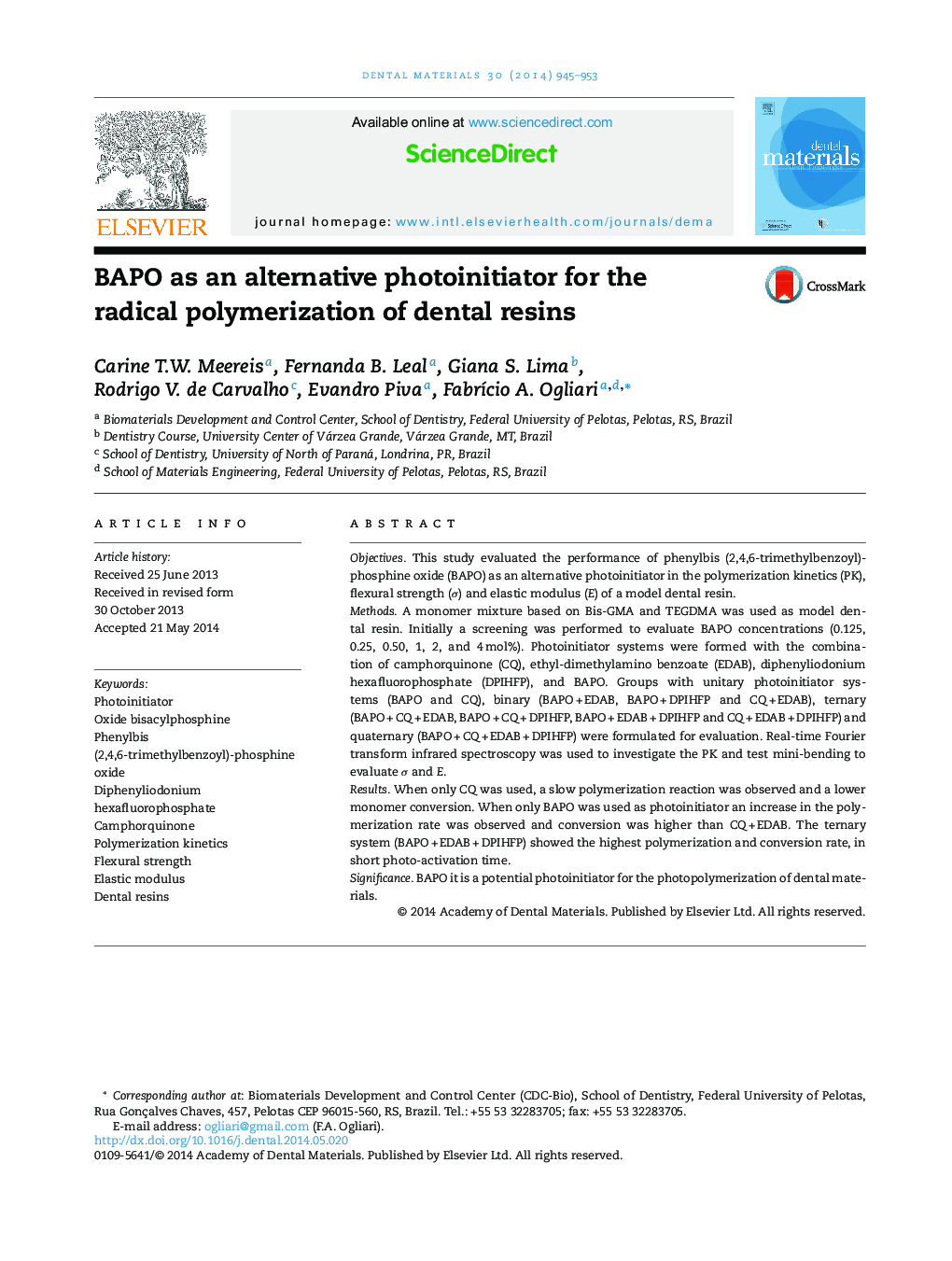| Article ID | Journal | Published Year | Pages | File Type |
|---|---|---|---|---|
| 1421092 | Dental Materials | 2014 | 9 Pages |
ObjectivesThis study evaluated the performance of phenylbis (2,4,6-trimethylbenzoyl)-phosphine oxide (BAPO) as an alternative photoinitiator in the polymerization kinetics (PK), flexural strength (σ) and elastic modulus (E) of a model dental resin.MethodsA monomer mixture based on Bis-GMA and TEGDMA was used as model dental resin. Initially a screening was performed to evaluate BAPO concentrations (0.125, 0.25, 0.50, 1, 2, and 4 mol%). Photoinitiator systems were formed with the combination of camphorquinone (CQ), ethyl-dimethylamino benzoate (EDAB), diphenyliodonium hexafluorophosphate (DPIHFP), and BAPO. Groups with unitary photoinitiator systems (BAPO and CQ), binary (BAPO + EDAB, BAPO + DPIHFP and CQ + EDAB), ternary (BAPO + CQ + EDAB, BAPO + CQ + DPIHFP, BAPO + EDAB + DPIHFP and CQ + EDAB + DPIHFP) and quaternary (BAPO + CQ + EDAB + DPIHFP) were formulated for evaluation. Real-time Fourier transform infrared spectroscopy was used to investigate the PK and test mini-bending to evaluate σ and E.ResultsWhen only CQ was used, a slow polymerization reaction was observed and a lower monomer conversion. When only BAPO was used as photoinitiator an increase in the polymerization rate was observed and conversion was higher than CQ + EDAB. The ternary system (BAPO + EDAB + DPIHFP) showed the highest polymerization and conversion rate, in short photo-activation time.SignificanceBAPO it is a potential photoinitiator for the photopolymerization of dental materials.
